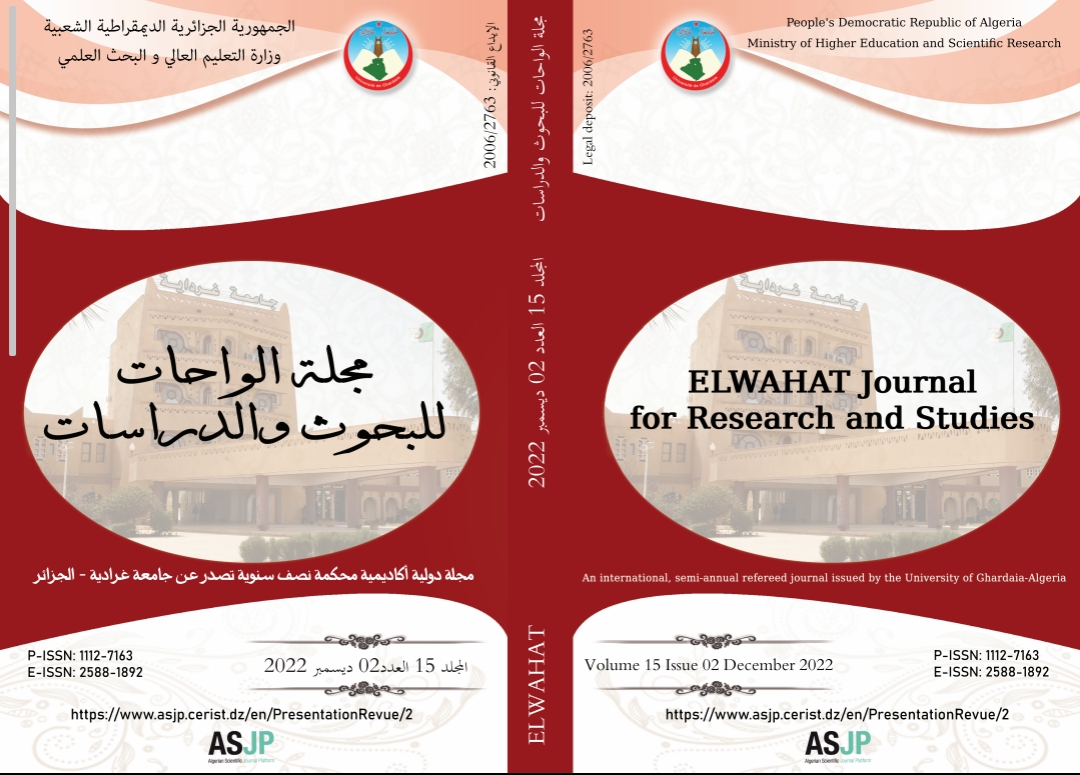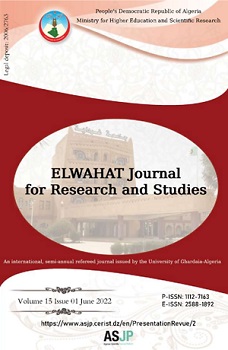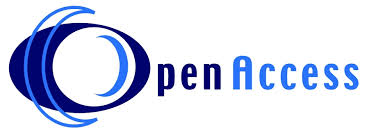Using Lawsuits-Based YouTube Videos to Reinforce Students’ English Speaking Fluency: The Case of Business Law Students at Bechar University
Abstract
Abstract:
YouTube is a crucial online audio-visual resource that is used by a multitude of language educational endeavours to teach English and spur learner autonomy. Thus, the current research sought to examine the impact of using Lawsuits-Based YouTube Videos (LBYV) on reinforcing business law students’ English speaking fluency. For this purpose, the researcher employed a pre-experimental—one-group pretest-posttest design. The participants were first-year Master students (30) in the Department of Law, Tahri Mohamed University (Algeria). To collect data, speaking fluency pre-/ post-assessment was administered at the beginning and at the end of the treatment during ten sessions of Legal English course. Descriptive statistics and paired samples t-test were used to analyse quantitative data via SPSS 26. The findings revealed that the implementation of LBYV brought about statistically significant difference between pre-test mean scores (7) and post-test mean scores (10.5) in favour of post-test (t (29) = 16.025; p= 0.00 < 0.05).
Keywords: Business Law Students, Lawsuits-Based YouTube Videos, Legal English, Speaking FluencyReferences
Journal Articles
Albahlal, F. S. (2019). The impact of YouTube on improving secondary school students' speaking skills: English language teachers' perspectives. Journal of Applied Linguistics and Language Research, 6(2) , 1-17.
Almurashi, W. A. (2016). The effective use of YouTube videos for teaching English language in classrooms as supplementary material at Taibah University in Alula. Int.J. English Lang. Res. 4 (3) , 32-47.
Arroyyani, R. (2018). Improving students' speaking skill through YouTube video project for nursing department. JELLT, 2(2) , 5-18.
Baniabdelrahman, A. A. (2013). Effect of using internet tools on enhancing EFL students' speaking skill. J. Contemp. Res., 3(6) , 79-87.
Bashir. M. (2011). Factor affecting students' English speaking skill. . British Journal of Arts and Social Sciences, 2(1).
Basmah, I. (2018). Utilizing YouTube in enhancing speaking skills for Arabic language learners who speak other languages. International Journal of Humanities and Social Science, 8(2), 112-121.
Berk, R. A. (2009). Multimedia teaching with video clips: TV, Movies, YouTube, and Mtv U in the College Classroom. International Journal of Technology in Teaching and Learning, 5(1), 1-21.
Burke, S., & Snyder, S. (2008). YouTube: An innovative learning resourse for College Health Education Courses. International Electronic Journal of Health Education, 11(1), 39-46.
Cakir, I. (2006). The use of video as an audio-visual material in foreign language teaching classroom. The Turkish Online Journal of Educational Technology (TOJET), Pp. 67-72.
Dabrowski, A. (2010). When law goes pop- teaching Legal English through TV courtroom shows. Lingwistyka Stosowana , 3, 139-148.
Harmer, J. (2007). The practice of English language teaching. 4th ed. Harlow, UK: Pearson Longman.
Masrudin, M. (2018). The Efficiency of using short video through group work in teaching speaking to Indonesian English as a Foreign Language( EFL) Students. Arab World English Journal, 9(3), 282-293.
Meinwati, E., Rahmah, N., Harmoko, D., & Dewi, N. (2020). Increasing English speaking skills using YouTube. Polyglot: Jurnal Ilmiah, 16(1), 1-13.
Pichette, F. (2009). Second Language Anxiety and Distance Language Learning. Foreign Language Annals, 42(1) , 77-93.
Pratama, S., Arifin, R., & Widianingsih, A. (2020). The use of YouTube as a learning tool in teaching listening skill. Int. J. Global Operat. Res. 1(3), 123-129.
Saed, H., Haider, A., Al-Salman, S., & Hussein, R. (2021). The use of YouTube in developing the speaking skills of Jordanian EFL university students. Heliyon , 1-6.
Sayuri. (2016). Problems in speaking faced by EFL students of Mulawarman University. Indonesian Journal of EFL and Linguistics, 1(1), 47-61.
Syafiq, A., Rahmawati, A., Anwari, & Oktaviana, T. (2021). Increasing speaking skill through YouTube video as English learning material during online learning pandemic Covid-19. Journal of English Language Studies, 3(1), 50-55.
Tristiana, R., & Swondo, A. (2020). The effect of YouTube content making on students' speaking skill. Journal FISK, 1(1) , 148-157.
Vyushkina, E. (2016). Legal English through movies: Development of professional communicative competence. Studies in Logic, Grammar and Rhetoric, 45(58), 253-263.
Books
Baker, J., & Westrup, H. (2003). Essential Speaking Skill: A Handbookfor English LanguageTeachers. . London: Continuum.
Brown, H. D. (2004). Language Assessment: Principles and Classroom Practices. United States of America: Longman.
Crystal, D. (2003). English as a Global Language. Cambridge: Cambridge University Press.
Hedge, T. (2000). Teaching and Learning in Language Classroom. New York: Oxford University Press.
Krashen, S. D., & Terrel, T. D. (1983). The Natural Approach: Language Acquisition in the Classroom. Hemel Hempstead: Prentice Hall International English Language Teaching.
Luoma, S. (2004). Assessing Speaking. Cambridge, UK: Cambridge University Press.
Seminar Articles
Riswandi, D. (2016). Use YouTube-based videos to improve students' speaking skill. Proceeding the 2nd International Conference on Teacher Training and Education, 2(1), 298-306.






